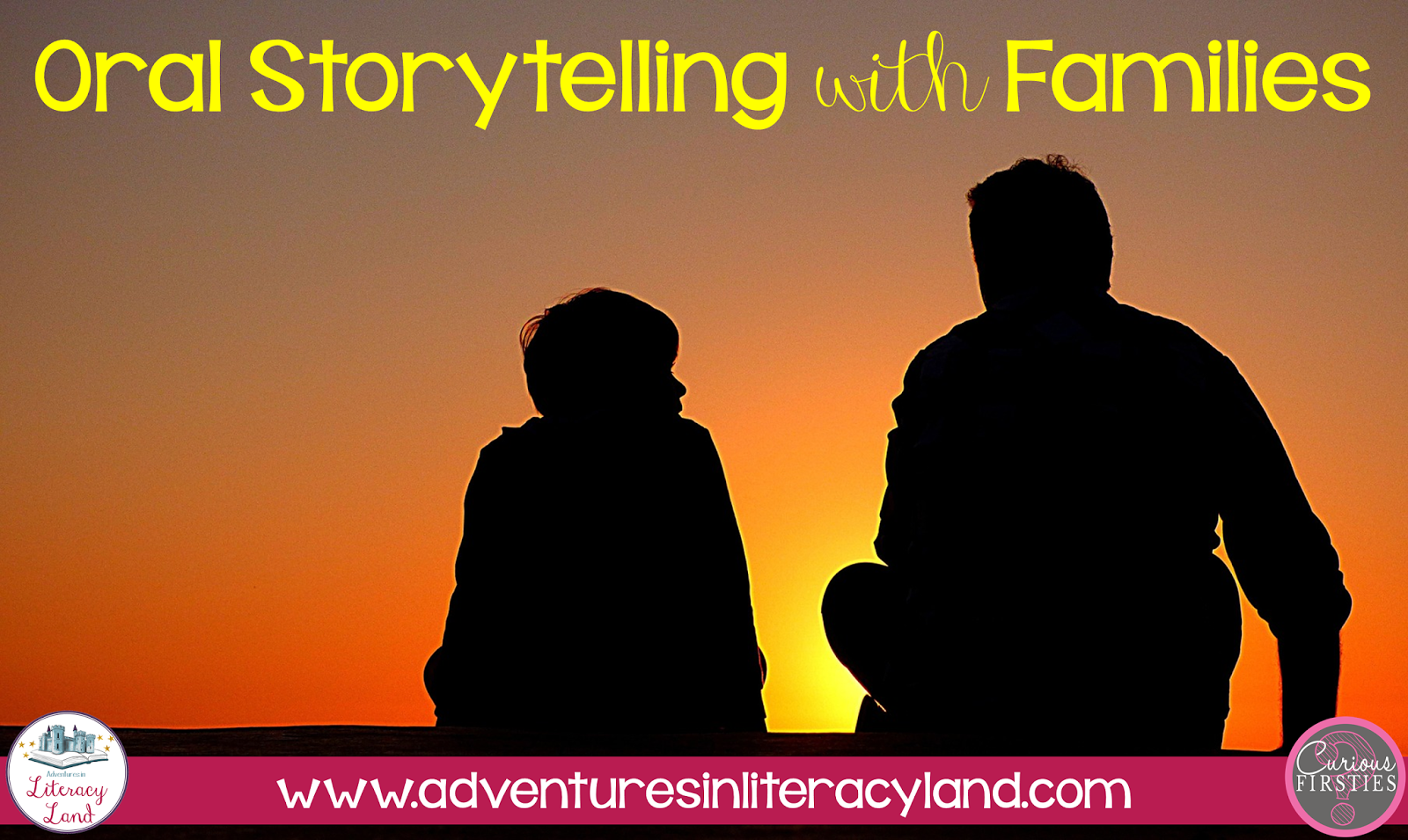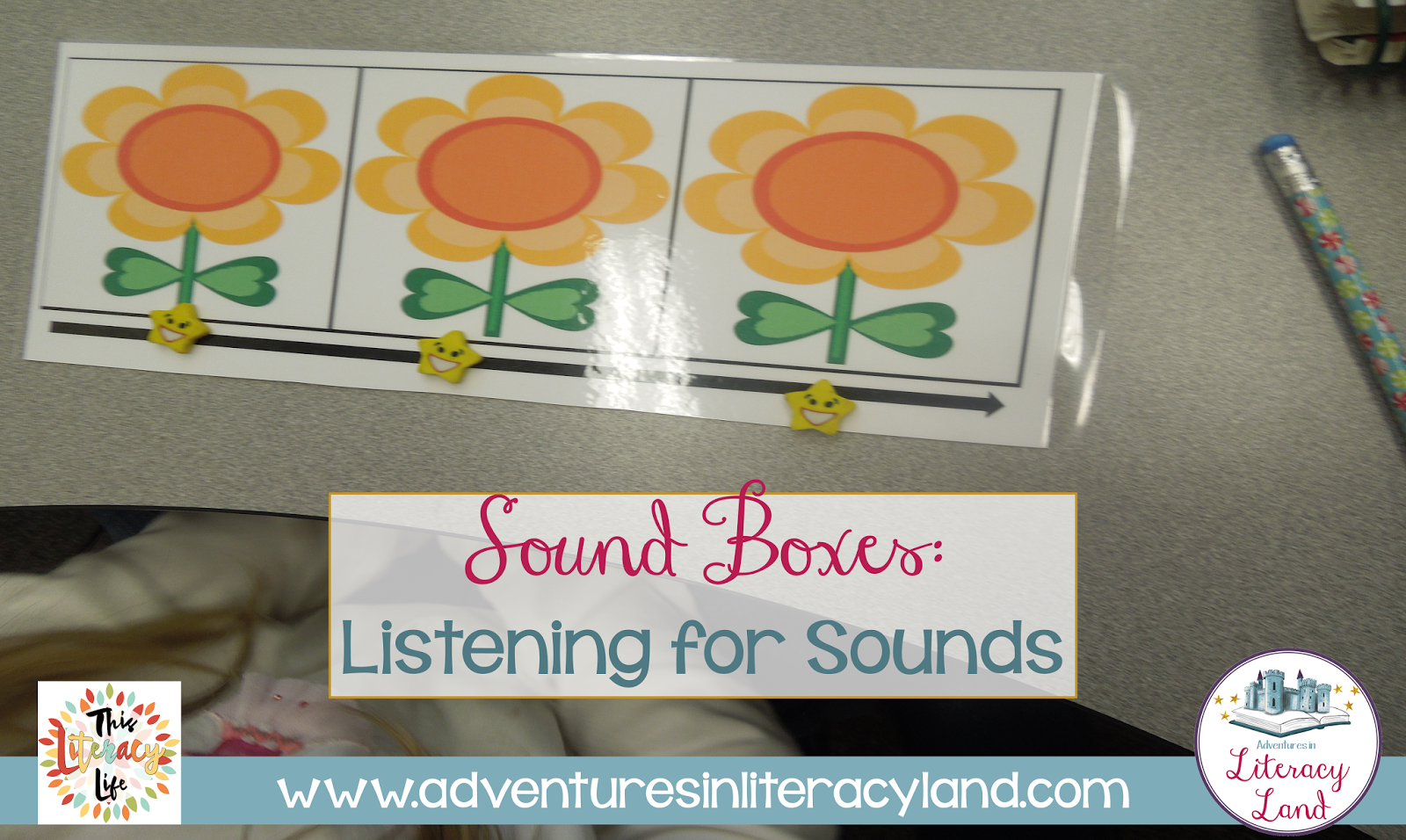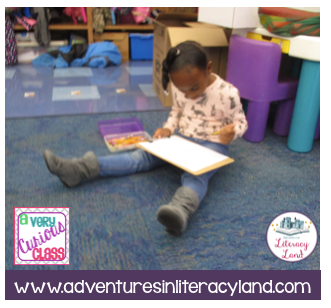
Oral Storytelling with Families
Last month I wrote about our need to build oral language in order to support the reading and writing of our students. We can do this in so many different ways: routines we establish, lessons that we plan, or the games we play. But most of the language that students acquire comes from their homes. How can we help to support families?

Sound Boxes: Listening for Sounds
One of the things I love to do with students is to help them manipulate phonemes in words. This helps them to think about the sounds they hear in the words and gain a better understanding of words. As they work with the sounds, they can actually attend to the sounds and make words.
Posted by
Andrea Crawford

Increasing Motivation with Early Morning Book Club
As a teacher, what has been your biggest challenge to overcome? Perhaps it's been juggling planning and prep with a busy schedule. Maybe it's been working with the child in the classroom who never has homework, always needs to use the bathroom or run and errand, and never stops talking. It might even be working with difficult parents. In my situation, the obstacle I lose more sleep over and stress about is reaching what Donalyn Miller in The Book Whisperer calls, "The Dormant Reader". Yes, I have worked with all reader types throughout my teaching career, but this one is personal. This one is one of my own in my own home.

Keeping Them Motivated To Write
This year, my students are struggling with writing. Most of them do not enjoy writing, but I think for many of them it is because they struggle with it. With the holidays approaching and interest in school dwindling in favor of all things snow and Santa, I wanted to find ways to make writing exciting in hopes that the excitement will carry over into the new year.

Wants and Needs and Knowing the Difference
WANTS and NEEDS and knowing the difference is a Kindergarten Standard of Learning in Virginia. It's sounds impossible, but it can actually be a really fun unit for kindergartners. They understand the concept of "want," so you really just need to help them think about what they need. I like to teach this unit between Thanksgiving and Winter Break.

A Quick & Easy Way to Teach Vocabulary
I want to share my favorite vocabulary activity with you! One of the great things about this Vocabulary Graphic Organizer is that it can be used K-5 and across all subject areas. There is a free copy of the organizer later in this post.

Kids Creating: Games For Learning
My students love to play games, but I was struggling to keep up with them in terms of differentiation and keeping it fresh. One morning on my way to work, I had a brainstorm: Why can't they help make games to meet their needs?!?

Encourage Imagination and Oral Storytelling with Spot
With each new set of students that we meet each year, one thing has become increasingly evident: oral language needs to be strengthened. This could be for a number of reasons: more screen time, meals on the go, less playtime (recess too), or other changes in a culture. But regardless of the reasons, as teachers we have to support language development. Without oral language skills, comprehension, writing, and math explanations are much more difficult. So what can we do?

Five Unique Ways to Build Reading Fluency
Reading is like riding a bike. You watch little ones beginning to ride a bike, they're wobbling all over the place. But as we practice and practice and practice, we don't even think about peddling anymore. Eventually we can ride with no hands. – G. Reid
Students' reading fluency develops just like bike riding skills. Our little ones start off reading word by word with occasional "falls", but with lots of practice, they gain speed and momentum to glide along and make meaning. The challenge of reading fluently requires several subskills in order for a reading to experience fluency success. What are those skills?

5 Simple Ways to Embrace the Holidays without Sacrificing Content
Are you looking for simple ways to embrace (and survive!) the holiday season without sacrificing the content you are responsible for teaching? My hand is raised! My students have fun each and every holiday season in my classroom, but I never stop teaching. You will not find my students and I watching the Grinch on a Friday afternoon...Read on to find out how you can incorporate the holidays so that your students still have fun, but continue to teach at the same time!

I Like Big Books and I Cannot Lie!
Up-to-date big books can be hard to come by. They are expensive and not a priority in many school's budget. So how can I implement big books in a classroom when I don't have the money to do so?

Summarizing... Getting to the HEART of the Story
SOMEBODY...
Another Reading Comprehension strategy that can be used in all primary classrooms is Summarizing. Too often students think summarizing is retelling. In order to get a quick summary you need to get to the heart of the story.The easiest technique for early readers is SOMEBODY…WANTED… BUT… SO… AND technique. I would be happy to credit to the one who thought of this technique…because it is genius! The problem with credit is I’ve seen it in so many places, I’m not sure who came up with this originally. That being said, it’s a keeper!
WANTED...
I first used this technique with my kindergarten class. We were addicted to Magic Tree House Books (that’s another post for another day) and we started practicing our summarizing after each chapter. I made a poster with the 5 words on it as a reminder. We did not write down the summaries…we only practiced the summaries orally. This year, I taught my first and second grade students to summarize using this technique. We made a poster as an anchor chart using their words. Getting them to define the word will give them ownership and increase understanding.BUT...
We started with a whole group S...W...B...S...A. After reading a short story, we used the chart to fill in the blanks and write a summary sentence. This can be broken into more sentences, as the summaries are more complex.
SO...
AND...
We also talked about how we could use it for our longer books. After reading “The Magic Bike” from Reading A-Z and we wrote a longer summary. We started with an introduction sentence. Then, wrote the beginning of the summary using Somebody…Wanted…But…So…And. Realizing this didn’t quite tell the story, we had to add another But…So…And to finish the story summary. Sometimes, you will see SOMEBODY... WANTED... BUT... SO...AND...THEN... SO... FINALLY. These are all good options, depending on the story.DON'T FORGET...
The SWBSA Paint Chip Summary Bookmarks from an earlier post about paint chips.For a FREEBIE Summarizing Set, click the link.
Feel Free to Pin this Post for later:

Reading Ritual: Character Hall of Fame
Reading rituals...they are an integral part of our reading classrooms in order to create an environment for readers to be fostered, grown, and encouraged. They look different in every classroom and some rituals will have more impact than others.

Make Reading Fun!
Can we all agree that students who are motivated and engaged will become better readers? If we want students to be motivated, we must be too! If we want students to be engaged in activities linked to reading, we must be too! I hope that this post renews your love for literacy and puts a little pep in your step! Happy Fall Ya'll!!!

Why Small Group Instruction Can Not Be Ignored
The Situation
Student one transferred into Lincoln Park Elementary in October from Texas. She is in fifth grade and English is her second language. Her reading level is late third and comprehension is a challenge.Student two has attended Lincoln Park Elementary since kindergarten. He has always struggled with reading. He struggles with spelling and writing. His reading lacks fluency, and decoding unfamiliar words is challenging.
Student three has also attended Lincoln Park Elementary since kindergarten. She is on grade level, has passed state assessments with a score slightly above the cut score. She struggles with attention at times and is being treated for ADHD. She's very inquisitive, and with some modifications in class, she's kept on task. Comprehension can be impacted when the environment is distracting.
The final student joined Lincoln Park Elementary in second grade. He was identified for the talented and gifted program in third grade. He is an avid reader with a rich vocabulary. He's a quiet child, never complains, and keeps busy with independent reading when other work is complete.

Word Hunts: The Cornerstone of Word Study Instruction
For years, I taught third graders, and we focused on word study instruction quite a bit. After learning our features and how they work, the best part of the week was the word hunt. Students would use what they knew and really focused their learning on the features and not just the words.

Effectively Using a Para in the Literacy Classroom
Having been an ESL teacher, most of the positions I have held allowed for a para to be in my classroom for about 30-60 minutes per day. Of course if there were assessments occurring, staff absent, or anything special going on this did not occur. BUT, having an extra person for even just a small amount of time can be very useful!

Reading Centers: A Couple Ideas
We are in the full swing of literacy centers in my kindergarten classroom. I'm always looking for new ways to make reading instruction and skill practice exciting for my kiddos.
I downloaded these free CVC/CCVC cards on TpT, but you could use any picture cards to cover skills you are working on. My students use magnetic letters to build the words on a magnetic board. I purchased the magnetic boards at JoAnn Etc. 3-4 years ago. I only have 3, so any additional students use a magnetic dry erase board. They take a photo and upload to the Seesaw app for me to see and to share with their families. They are excited to use the magnetic letters, and I feel this is something we can use throughout the year to practice many different skills (CVC, CVCe, sight words, etc).
I downloaded these free CVC/CCVC cards on TpT, but you could use any picture cards to cover skills you are working on. My students use magnetic letters to build the words on a magnetic board. I purchased the magnetic boards at JoAnn Etc. 3-4 years ago. I only have 3, so any additional students use a magnetic dry erase board. They take a photo and upload to the Seesaw app for me to see and to share with their families. They are excited to use the magnetic letters, and I feel this is something we can use throughout the year to practice many different skills (CVC, CVCe, sight words, etc).

ABC Fun
In Kindergarten, the first few weeks are all about our ABC's!!
Each day, we introduced a new letter and it went a little something like this:
We start our morning with a letter review. We introduce the letter and its sound. Then we practice stretching some words with that sound. I find it helpful to have the kids applying their sounds as they are learning them. It gives them a purpose rather than just rote memorization. After we blend a few words, we sing some songs. My kiddos LOVE Heidisongs and we sing them every day.

Homework: The Great Debate
As I'm sure you've all seen, homework has been in the news. The teacher from Texas sent a letter home to her parents, someone posted it, and it went viral. There has been more publicity with homework because of this, but I have struggled with it for a while. As the RtI coordinator in our building, had a teacher refer a student for academic difficulties, but blamed the issue entirely on incomplete homework. Really? Should homework hold that much power?

Repurposing OLD Literacy Materials
If you are a new teacher, you might walk into your new classroom and find the closets and cabinets full of literacy curriculum materials from the last twenty years (literally). And if you are an experienced teacher, you might be the one filling those closets! Or maybe you just inherited some piles when moving classrooms. Either way, we all know the sight of the hallway just full of books and workbooks lined up next to the doors waiting to be picked up by the janitorial staff.
Have you ever thought about how you could repurpose SOME (not all!) of these materials? Here are a few suggestions.

Let Me Finish!
At about 4 years old, my daughter started to ask me if we were in a book. What an interesting question. At almost 8 years old, she continues to get lost in books, is constantly connecting personal experiences to events in books, and must be reminded often to close the book and brush her teeth! This love for books is something that we wish for all of our students.
At Nerd Camp this year I met Minh Lê, the author of Let Me Finish. I realized this book was written for my daughter and all of the other children that we want to get "sucked" into books. This is Minh Lê's breakout book and my, oh, my...there is a lot that we (as teachers) can do with it!
At Nerd Camp this year I met Minh Lê, the author of Let Me Finish. I realized this book was written for my daughter and all of the other children that we want to get "sucked" into books. This is Minh Lê's breakout book and my, oh, my...there is a lot that we (as teachers) can do with it!

Finding Joy in Everything We Read!
As a mother of two children, I know the struggle of helping my children as they learn to read. When my son was in kindergarten and first grade, he would bring home the most mundane and boring books that were meant to be easy to read. Sure he could read them, but there was little to no excitement in those milestones. It was the reading we did each night before bed. We would read together some of his favorite books, and the joy on his face as he read the words brought joy to my heart as well. In the final chapter of Reading Wellness, the authors remind us that progress is not always a result of hard work, but that sometimes if we "work less", we all enjoy reading more!
Subscribe to:
Posts (Atom)
































